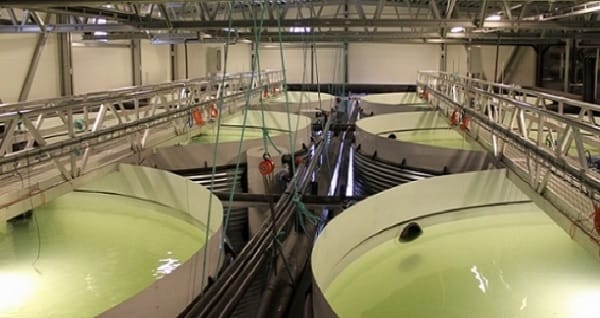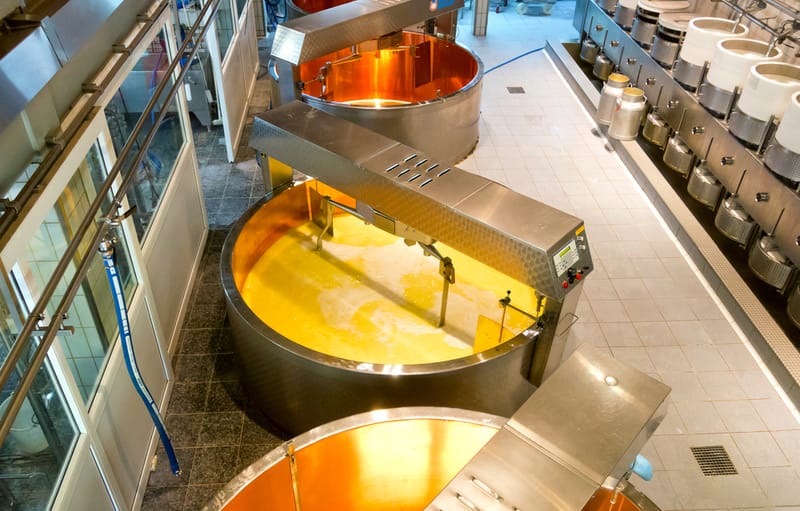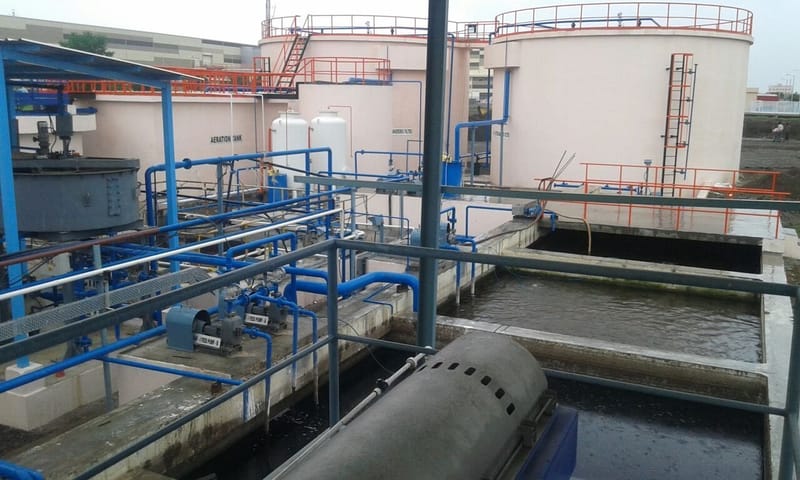Revolutionizing Resource Management: Wastewater Treatment and Reuse in the Beverage Industry
Introduction to Beverage Wastewater Treatment
The beverage industry, encompassing everything from soft drinks to alcoholic beverages, is a significant consumer of water. This extensive water usage is not just limited to the product ingredients but extends to cleaning, sanitation, and other aspects of production. As a result, the industry generates large volumes of wastewater laden with organic materials such as sugars, starches, and other residues. Untreated discharge of this wastewater can lead to severe environmental repercussions and substantial fines due to regulatory non-compliance.

Challenges of Beverage Wastewater Treatment
Managing High Biochemical Oxygen Demand: A distinctive feature of the beverage industry's wastewater is its elevated Biochemical Oxygen Demand (BOD), a critical indicator that quantifies the oxygen requirement for aerobic biological organisms to decompose organic materials present in water. The organic compounds, such as sugars, starches, and alcohols, commonly found in the effluents of beverage production processes, act as nourishment for these microorganisms. This activity results in the depletion of oxygen levels in aquatic environments, which can render these habitats unsuitable for aquatic life and contribute to the deterioration of overall aquatic ecosystem health.
Addressing the challenge posed by this high organic load necessitates the deployment of sophisticated and specialized treatment technologies. These technologies must be capable of efficiently lowering the BOD to levels that are deemed safe and environmentally friendly. Furthermore, the diverse nature of organic compounds, which varies according to the types of beverages being produced, introduces an additional layer of complexity in the design, implementation, and optimization of effective wastewater treatment methodologies.
Addressing the Fluctuations in Wastewater Volume and Composition: The beverage sector is particularly susceptible to fluctuations in production schedules and demands, which are often dictated by seasonal trends or specific batch-based production processes. These fluctuations lead to changes in both the volume and the chemical makeup of the wastewater produced, posing several challenges to its management:
Capacity Requirements: Treatment infrastructure must be designed with the capability to manage the highest expected volumes of wastewater, which can significantly exceed average volumes, thereby necessitating a higher allocation of both capital and operational resources.
Efficiency Concerns: The effectiveness of biological treatment processes, which play a crucial role in wastewater management, can be compromised by varying flow rates. These processes rely heavily on maintaining stable environmental conditions to support the active biological communities responsible for treating the wastewater. Any abrupt or significant changes in these conditions can undermine the efficiency of these processes, leading to reduced treatment effectiveness and the risk of failing to meet established environmental discharge criteria.
Need for Adaptability: It is essential for wastewater treatment systems to possess the flexibility and adaptability to respond efficiently to changes in wastewater characteristics without requiring extensive manual adjustments. This highlights the importance of integrating dynamic and responsive treatment solutions that can accommodate the beverage industry's variable production demands.
Overcoming Regulatory Compliance Hurdles: Ensuring compliance with the stringent environmental standards and regulations imposed by both local and international regulatory bodies represents a foundational element of effective wastewater management within the beverage industry. These regulations are designed to safeguard water quality and the integrity of ecosystems by setting limits on the allowable concentrations of various pollutants, including organic materials and nutrients. The variability of these regulatory standards, influenced by factors such as geographical location, the specific nature of receiving water bodies, and local environmental policies, adds to the complexity of maintaining compliance.
The repercussions of non-compliance can be severe, encompassing substantial financial penalties, restrictions on operations, or even the forced closure of facilities. Consequently, it is imperative for beverage producers to not only invest in and implement state-of-the-art treatment technologies but also to engage in ongoing monitoring and continual adjustment of their wastewater treatment processes. This approach must be proactive, focusing on the integration of advanced treatment options, continuous real-time monitoring, and the relentless pursuit of process improvements. Such a comprehensive and forward-looking strategy is essential for aligning with evolving regulatory demands, ensuring the preservation of environmental resources, and upholding the principles of environmental stewardship.

Effective Wastewater Management in the Beverage Sector
Managing wastewater in the beverage industry involves a structured approach, starting with detailed wastewater analysis and followed by a sequence of treatment phases designed to ensure environmental compliance and water sustainability. This process is divided into several key stages, each targeting specific aspects of wastewater treatment.
Understanding Wastewater Characteristics
Essential Initial Analysis: The journey to effective wastewater treatment begins with a comprehensive examination of the wastewater's makeup. This step is vital for selecting the right treatment methods. Knowing the exact levels of organic and inorganic substances, the pH, temperature, and specific unique contaminants present in the wastewater influences the choice of treatment technologies. For beverages, dealing with high BOD and COD levels is common, requiring robust solutions. Identifying any special additives or by-products in the wastewater is also crucial and relies on advanced analytical techniques such as spectrometry and chromatography. This foundational knowledge guides the selection of an efficient treatment strategy.
Setting the Stage: Pre-treatment
Conditioning the Wastewater: The pre-treatment phase is pivotal in readying the wastewater for deeper treatment, focusing on removing solids and substances like fats, oils, and greases that impede biological treatment. Technologies like Dissolved Air Flotation (DAF) are commonly employed for this purpose, effectively separating these substances from the wastewater. Adjusting the wastewater's pH is also part of this phase to ensure optimal conditions for the biological treatment that follows. By effectively preparing the wastewater, pre-treatment not only boosts the success of subsequent stages but also protects treatment infrastructure.
Biological Decomposition
Breaking Down Organic Content: The heart of the wastewater treatment process is the biological stage, where microorganisms are employed to digest the organic matter. This phase is crucial for cutting down BOD and COD to safer levels. Oxygen-reliant aerobic treatments are popular for their effectiveness in breaking down pollutants. Techniques like Activated Sludge and Moving Bed Biofilm Reactors harness the power of these microorganisms. On the flip side, anaerobic treatments are suited for more concentrated wastewater and offer the bonus of producing biogas, turning waste into an energy source and boosting the process's green credentials.
Polishing and Refining
Ensuring Compliance Through Final Treatments: In some cases, the wastewater needs further refinement through polishing treatments to comply with strict environmental discharge guidelines. This stage is tailored to remove any lingering contaminants or to further reduce BOD and COD levels. Advanced methods like Reverse Osmosis and ion exchange are particularly useful here, targeting dissolved salts and specific contaminants. This customization ensures the treated water meets the necessary standards for discharge or reuse, reducing the industry's environmental footprint.
Water Reuse Potential
The beverage industry's move towards reusing treated wastewater for non-potable applications, such as bottle washing and irrigation, marks a significant stride towards water sustainability and environmental conservation. This innovative practice reduces the reliance on freshwater, conserving an essential resource, and decreases the environmental impact associated with water extraction and wastewater disposal. Specifically, repurposing treated wastewater for bottle washing can lead to substantial freshwater savings, a critical operation within the industry that demands high water usage. Additionally, applying treated wastewater in irrigation supplies agriculture, a vital sector for the beverage industry, with an alternative water source that can enhance soil nutrients and potentially lessen the dependence on chemical fertilizers.
Implementing such water reuse initiatives necessitates sophisticated treatment and monitoring to ensure the repurposed water meets safety standards for its intended use. This forward-thinking approach not only underscores the industry's commitment to sustainable practices but also sets a benchmark for responsible water management, aligning with global efforts to combat water scarcity and support a circular economy.

Conclusion
Effective wastewater treatment is crucial for the beverage industry to ensure environmental responsibility and regulatory compliance. By understanding the specific challenges of beverage wastewater and implementing a combination of pre-treatment, biological treatment, and polishing steps, companies can achieve sustainable operations and potentially reduce freshwater consumption through water reuse.